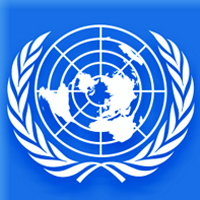A dispute between China and the US, the EU and Japan over rare earth exports has simmered for some time, and the feud has escalated with the recent involvement of the World Trade Organisation (WTO), according to Xinhua News.
The US, European Union and Japan have filed a joint complaint before the WTO, accusing China of choking exports of three raw materials, including rare earth metals.
The WTO case could take years to resolve and may not actually help to increase supplies of the metals, which are used to manufacture an array of high-tech goods, including portable music players, electric car batteries, wind turbines and missles.
China has about 36 percent of the world’s known rare earth deposits, but its exports account for 90 percent of global demand for the metals.
The first step in the WTO case will be a 60-day period for the two sides to try to resolve the dispute, said Tu Xinquan, associate director of the China Institute of WTO Studies at the Beijing-based University of International Business and Economics.
However, Tu said it is very likely that both sides will not be able to reach an agreement during the period, saying the next step will be for the US, the EU and Japan to ask the WTO to establish a dispute-settlement panel to decide the case.
Once appeals are lodged and heard, the process could take as long as two and a half years to complete, he said.
The US, the EU and Mexico won a similar case against China in January concerning nine other raw materials.
However, China issues export quotas for rare earth metals while capping domestic output and consumption, enabling the country to use the General Exception clause to justify its export quotas on the ground of environmental protection, Tu said.
The WTO, in Article XX of the General Agreement on Tariffs and Trade, allows its members to implement export restriction measures that are “necessary to protect human, animal or plant life or health” or “relating to the conservation of exhaustible natural resources.”
If China can pass a necessity test by proving that the current export quota system has been implemented in conjunction with domestic production restrictions, it can invoke Article XX, said Zuo Haicong, dean of the School of Law at Nankai University.
Rare earth exports accounted for just 60 percent of China’s 2011 quotas, suggesting that the country’s policies have not restricted global demand, Tu said.
Although uncertainty remains, China still has a chance to win the case, he said.
Western countries have long held that China has used its market dominance of rare earth metals as a geopolitical bargaining chip. However, market dominance has been abdicated to China by Western nations, to some extent.
The United States, once the largest supplier of rare earth metals, allowed its mining industry to decay many years ago because of environmental concerns and market changes.
It shut down the Mountain Pass rare earth mine, the largest known deposit outside China, in 2002 and turned to imports to maintain its rare earth supplies.
Other countries, such as Canada and Australia, have also stopped mining for the metals.
Meanwhile, lax environmental standards have enabled Chinese miners and refineries to turn out the metals at extremely low prices and replace the U.S. as the biggest supplier.
More at Xinhua News




